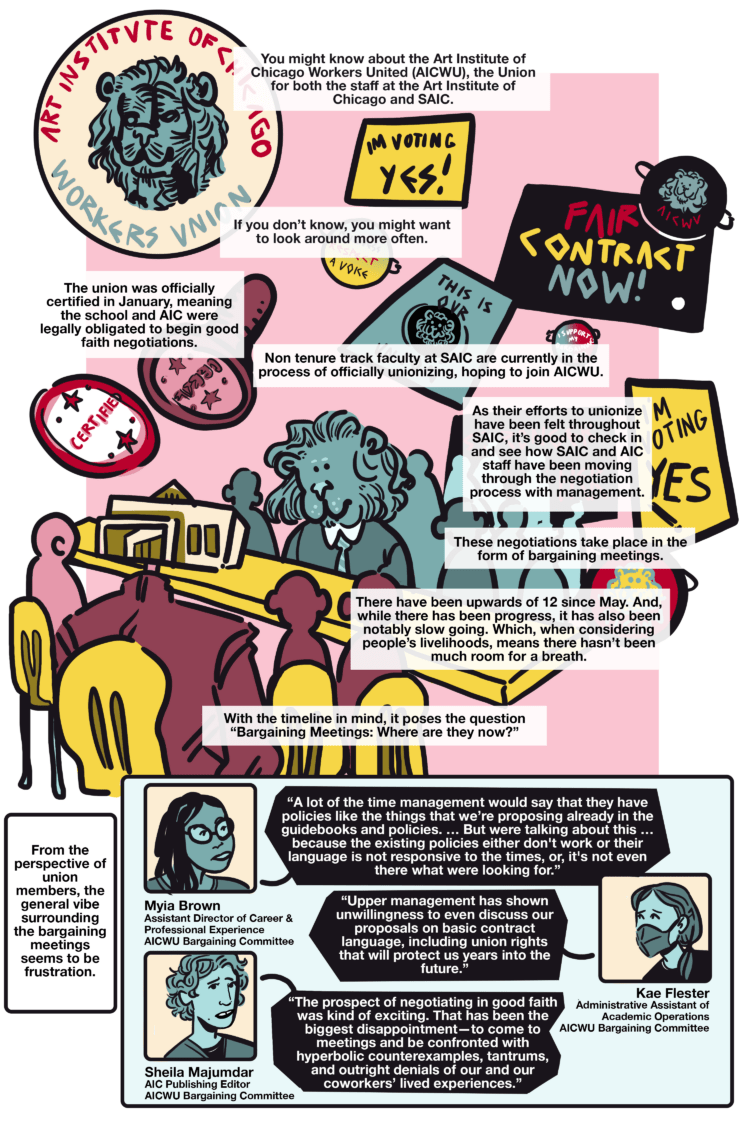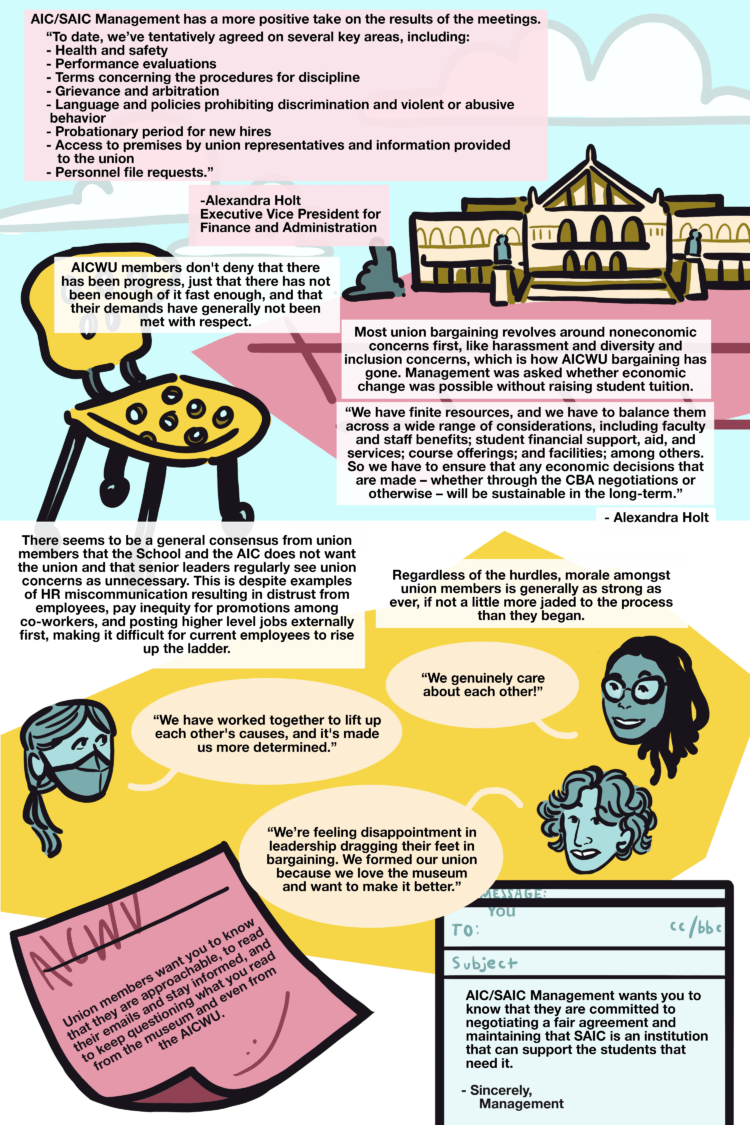Transcript:
You might know about the Art Institute of Chicago Workers United (AICWU), the Union for both the staff at both the Art Institute of Chicago and SAIC.
If you don’t know you might want to look around more often. The union was officially certified in January, meaning the school and AIC were legally obligated to begin good faith negotiations.
Non tenure track faculty at SAIC are currently in the process of officially unionizing, hoping to join AICWU. As their efforts to unionize have been felt throughout SAIC, it’s good to check in and see how SAIC and AIC staff have been moving through the negotiation process with management.
These negotiations take place in the form of bargaining meetings. There have been upwards of 12 since May. And while there has been progress, it has also been notably slow going. Which, when considering people’s livelihoods, means there hasn’t been much room for a breath.
With that in mind, it poses the question “Bargaining Meetings: Where are they now?”
From the perspective of union members, the general vibe surrounding the bargaining meetings seems to be frustration.
Myia Brown, Assistant Director of Career and Professional Experience is part of the AICWU Bargaining Committee. Brown shared, “A lot of the time management would say that they have policies like the things that we’re proposing already in the guidebooks and policies….But were talking about this…because the existing policies either don’t work or their language is not responsive to the times, or, it’s not even there what were looking for.”
Kate Flester, Administrative Assistant of Academic operations, is also on the AICWU Bargaining Committee. Flester said, “Upper management has shown unwillingness to even discuss our proposals on basic contract language, including union rights that will protect us years into the future.”
“The prospect of negotiating in good faith was kind of exciting. That has been the biggest disappointment—to come to meetings and be confronted with hyperbolic counterexamples, tantrums, and outright denials of our and our coworkers’ lived experiences,” shared Sheila Majumdar, AIC Publishing Editor.
AIC/SAIC Management has a more positive take on the results of the meetings:
“To date, we’ve tentatively agreed on several key areas, including:
-Health and safety
-Performance evaluations
-Terms concerning the procedures for discipline
-Grievance and arbitration
-Language and policies prohibiting discrimination and violent or abusive behavior
-Probationary period for new hires
-Access to premises by union representatives and information provided to the union
Personnel file requests” – Alexandra Holt, Executive Vice President for Finance and Administration.
AICWU members don’t deny that there has been progress, just that there has not been enough of it fast enough, and that their demands have generally not been met with respect.
Most Union bargaining revolves around non economic concerns first, like harassment and diversity and inclusion concerns, which is how AICWU bargaining has gone. Management was asked whether economic change was possible without raising student tuition.
“We have finite resources, and we have to balance them across a wide range of considerations, including faculty and staff benefits; student financial support, aid, and services; course offerings; and facilities; among others. So we have to ensure that any economic decisions that are made – whether through the CBA negotiations or otherwise – will be sustainable in the long-term,” said Alexandra Holt.
There seems to be a general consensus from union members that the School and the AIC does not want the union and that senior leaders regularly see union concerns as unnecessary. This is despite examples of HR discrepancies resulting in distrust from employees, pay inequity for promotions among co-workers, and posting higher level jobs externally first, making it difficult for employees to rise up the ladder.
Regardless of the hurdles, morale amongst union members is generally as strong as ever, if not a little more jaded to the process than they began
“We have worked together to lift up each other’s causes, and it’s made us more determined,” said Kae Flester.
“We genuinely care about each other,” said Myia Brown.
“We’re feeling disappointment in leadership dragging their feet in bargaining. We formed our union because we love the museum and want to make it better,” said Sheila Majumdar.
Union members want you to know that they are approachable, to read their emails and stay informed, to keep questioning what you read from the museum and even from the AICWU.
SAIC/AIC Management wants you to know that they are committed to negotiating a fair agreement and maintaining that SAIC is an institution that can support the students that need it.









